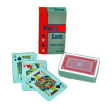Higher level skills that support other skills ...
We all know that development and skill levels build upon themselves. Easier to more challenging. But sometimes, it is the smallest things that can trip a student up. Things that we are surprised they don't know or do. Here are a few things to take a look at. You may be surprised by what is missing...

Number Dots: Dots representing numbers are always depicted in the same pattern. Recognizing the pattern and knowing it's value instantly is a valuable skill, rather then needing to count the dots each time. The number 5 is always 4 dots in a square with an additional dot in the middle. Domino's, dice, playing cards all use the same patterns.
Number Race Activity: Shake a number of die in your cupped hands (sneak in palmar arch practice!) then spill out. As quickly as possible call out the numbers. These get recorded and the first number to appear 10 times wins.
Play domino's or yatzee! No dot counting allowed!
 
Groupings: Counting any quantity of objects is always easier if split into smaller groups first. If for example, you are counting a stack of papers. You may make bundles of 10, before adding them together. Groupings are especially useful when "counting in your head".
Visual Grouping Activity: Toss a small handful of small objects onto the playing surface. Discuss ways they can be grouped; closest to each other; by color; by shape, etc. Then practice physically making the groups then counting. Next time only physically group 1/2 the objects and try to just visually group the rest. After coming up with a number, check by grouping and counting.
Jig work: Introduction to grouping can begin very early in development. Draw 10 circles on a paper. Ask the client to place one of the given objects on a circle. When all 10 circles are full, transfer them all together into a bag or cup. This also is useful when there are many pieces of a game that must be cleaned up and the client feels overwhelmed and doesn't know where or how to begin.
Play Jacks: Remember this classic game. It forced you to look for groupings to make them easier to pick up. Use pegs and a tennis ball as a substitute for "real jacks".

Copying from the board or a book:
For many students this is one of the most challenging tasks in the day. Practice "remembering" the letters of whole words rather than a letter or 2 at a time. Also approximate where in the sentence you are up to in copying and what the last word copied was. Have eyes try to "jump" or quickly scan to that word instead of needing to start at the beginning each time.

#3 or 5 can go on the #4. An ace or 3 can go on 2.
Sequences and Rapid Fill-in the blank:
Given any number or letter, can they quickly state what comes next or do they need to start at the beginning each time. Being able to "jump in" is more efficient and requires higher level thinking.
Playing Cards: Games like "higher-lower war" are great for this. Each player gets 1/2 the deck. Player 1 turns over his 1st card and places it face up in front of them. Player 2 flips his top card over. If it is the next card higher or lower than player 1's card, it gets placed on that players stack. If it is not, then it goes face up in front of player 2. Continue taking turns until a player is out of cards. They are the winner.
On Special This Week:
Mini Playing cards: 2" glossy finished playing cards. Great size for smaller hands or makes larger hands work harder. Unlimited uses for therapy and play. Small and convenient for travel and therapy bags.
Mini Dice Set: These tiny 1/4" little guys are real dice in mixed colors. So cute and appealing everyone will want to play. You get 24 in a package along with activity ideas. Great for number and color matching, picking up with hand tools or with fingers for in-hand manipulation work. Also develop the arches of the hand as you practice that perfect roll!
Copying From the Board: This activity workbook has a wide variety of graded activities to help children copy accurately and legibly from the board. 112 pages of exercises for improving eye hand coordination, visual & auditory memory, ocular motor skills, figure ground & near-point/far-point copying in both manuscript and cursive writing.This is a truly wonderful resource.
|
Topics
Bilateral motor coordination
ball skills
calming
cooperative games
crossing midline
cutting
dyspraxia
fine motor coordination
gross motor
group activities
handwriting
in-hand manipulation
inside activities
messy play
motor planning
obstacle course
pencil use
preschool
recess
sensory
sensory processing
shoetying
story starters
strengthening
tactile
upper body strength
vestibular; balance
visual motor skills
writing
Tips for copying from board, counting, sequencing that can improve efficiency
<![endif]-->



